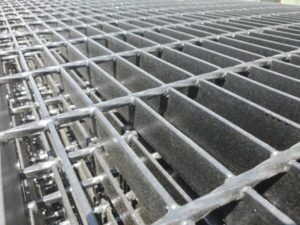When embarking on a construction or engineering project, the proper selection of materials is crucial. Among the most versatile and durable options available is steel grating. This guide will walk you through how to determine the correct steel grating based on load rating, ensuring that your structure is both safe and efficient.
1. Understand the Basics of Steel Grating
Steel grating is a series of bearing bars and cross bars, placed at right angles to each other, forming a grid-like pattern. This grating is frequently used in decks, walkways, platforms, and various other applications. But not all steel gratings are created equal; their strength and capacity vary depending on their design and the material used.
2. Importance of Load Rating in Steel Grating

The load rating of steel grating is a critical measure that communicates the maximum weight or force it can safely support. Neglecting to consider the load rating can result in structural failures, which not only damages the material and requires costly repairs or replacements but also puts lives at risk.
When discussing the load rating, we’re essentially looking at two primary factors: the uniform load and the concentrated load. The uniform load is the weight distributed consistently across the surface of the grating, like a group of people standing on a platform. In contrast, the concentrated load represents a specific point of weight or force, such as the wheel of a vehicle.
Moreover, environmental factors can also influence the effective load rating. Elements such as snow, ice, or accumulated debris can add to the weight on the grating. Additionally, dynamic loads, like those from moving vehicles or machinery, can create added stress.
Hence, selecting the right load rating isn’t merely about meeting the bare minimum requirement. It’s about accounting for potential variables, ensuring a margin of safety, and investing in the longevity and integrity of the structure. Properly rated steel grating not only provides stability but also peace of mind, knowing that the grating will function reliably under expected conditions.
Light-duty: Suitable for pedestrian traffic. Perfect for sidewalks, footbridges, and private applications.
Medium-duty: Designed for both pedestrian and light vehicular traffic. Think of parking lots, commercial establishments, and public walkways.
Heavy-duty: Engineered for areas with heavy loads or vehicular traffic, such as highways, docks, and industrial zones.
3. Factors Influencing Load Rating
- Bearing bar size and spacing: A denser pattern often results in a higher load rating. Thicker and wider bars generally support more weight.
- Material quality: Not all steels are the same. High-grade, alloyed steel often offers better strength and corrosion resistance.
- Method of fabrication: Welded gratings tend to have a higher strength compared to riveted or pressure-locked gratings.
4. Additional Considerations
- Span length: The longer the span, the lower the load capacity. Always consider the distance between supports.
- Surface treatments: Galvanized or painted steel grating can enhance the longevity and corrosion resistance of your grating.
- Safety features: Depending on the application, opt for gratings with anti-slip surfaces or serrated edges for added safety.
5. Seek Expert Guidance
Always consult with professionals or the steel grating company to ensure the selected grating meets your project’s requirements. Our experts at Drexel can guide you in determining the most suitable grating based on load rating and other specific needs.
Secure Your Project’s Success with the Right Steel Grating Choice
In determining the correct steel grating for your project, understanding the load rating is paramount. It ensures safety, functionality, and longevity. By keeping these considerations in mind and seeking expert advice, you can guarantee the optimal steel grating choice for any application. Remember, the strength and resilience of your structures largely depend on the materials used, making steel grating a crucial component in the world of construction and engineering.


